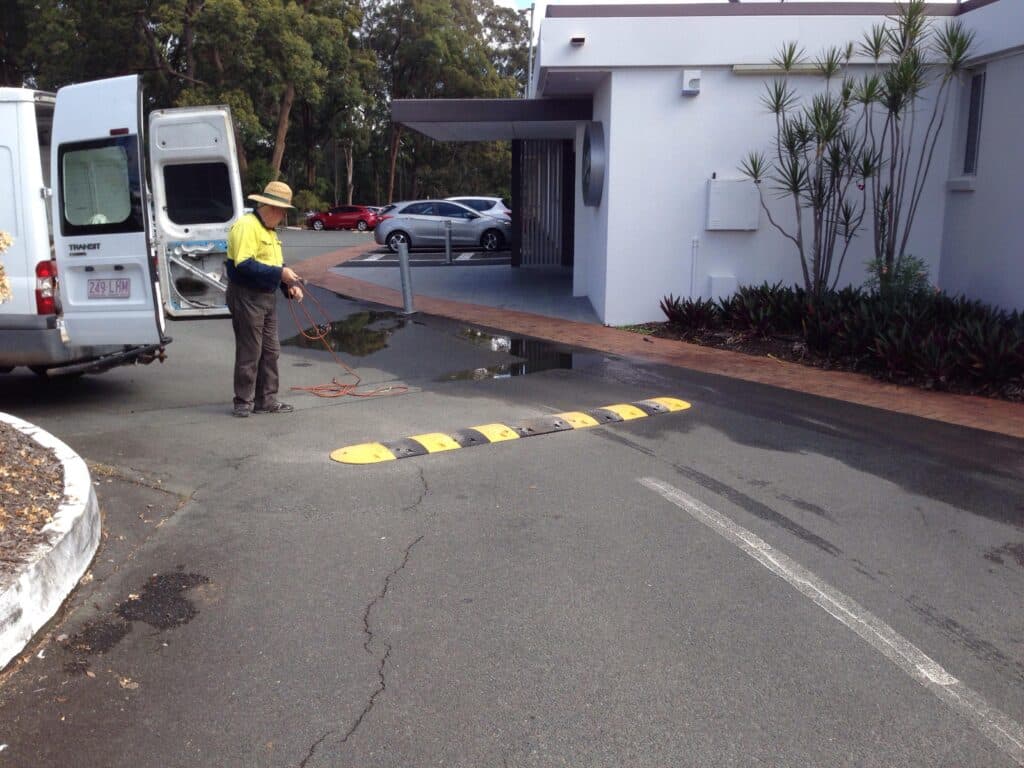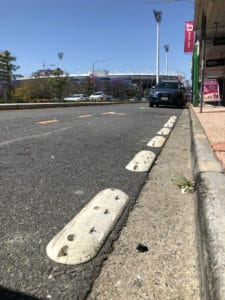

When it comes to managing traffic on private streets, the idea of installing a speed hump often pops up as a solution to slow down vehicles and make the area safer, particularly in residential zones. But if you’re thinking about doing this on a private street, unfortunately, it’s not quite as simple as that. There are several things you need to consider—legal requirements, community opinions, and practical matters. Let’s break it all down on how to install a Speed Hump on a Private Street in Australia.

In Australia, a private street is usually owned and maintained by a group of property owners, a body corporate, or sometimes even a single entity. Unlike public roads, which are under the control of local councils or state authorities, private streets are the responsibility of those who own them. This gives owners a fair bit of freedom but also comes with a bundle of responsibilities.
While you might think owning a private street means you can do whatever you like with it, that’s not entirely the case. You still need to make sure any changes you make, like installing a speed hump, follow local regulations. Councils, or other authorities, may have a say, even if the street is technically private.
Before you get started, it’s important to understand the legal requirements for installing a speed hump. Depending on where you live, local council regulations might dictate what you can and can’t do on a private street. In some cases, you might need to apply for a permit or get some sort of approval before you start any work.
It’s also worth checking if your council has specific rules about the size, shape, or type of speed humps you can install. Councils often have guidelines to ensure that speed humps are safe and don’t cause unnecessary disruption to traffic. In some instances, you might be required to commission a traffic study to evaluate the impact of the speed hump on traffic flow, safety, and accessibility.
If you’re dealing with a body corporate, you’ll need to check the by-laws, which might outline the process for making changes to shared spaces like streets. This could involve getting approval from the body corporate committee or even a vote from all property owners.
Installing a speed hump isn’t something that only affects you—it impacts everyone who uses the street. That’s why it’s crucial to get your neighbours on board before you move forward. Some might be all for it, while others could have concerns about noise, accessibility, or how it might slow down emergency vehicles.
Start by talking to your neighbours and explaining why you think a speed hump is necessary. You might want to gather signatures on a petition to show there’s community support for the idea. Another good idea is to organise a meeting where everyone can discuss the pros and cons. This way, you can address any concerns upfront and hopefully get everyone on the same page.
If your private street is managed by a homeowners’ association (HOA) or body corporate, you’ll need to go through them before making any changes. These organisations usually have rules in place for how shared spaces are used and modified. You’ll likely need to submit a formal proposal that outlines why you want to install a speed hump, where it will be placed, and what materials will be used.
The body corporate or HOA will typically review your proposal, and it may require a vote from the committee or even all the property owners. Without their approval, you might not be able to proceed, and doing so without permission could lead to fines or other penalties.
Once you’ve got the green light from the necessary parties, it’s time to bring in the professionals. Installing a speed hump isn’t just a case of throwing some asphalt on the road—you need to make sure it’s done right. A poorly installed speed hump can cause all sorts of issues, from damaging vehicles to creating a safety hazard.
Look for a contractor with experience in traffic calming measures. They should know the local regulations and be able to advise on the best type of speed hump for your situation. Make sure they provide a detailed plan for the installation, including where the speed hump will go, its size, and the materials they’ll use.
At Speed Humps Australia, we’ve spent over 15 years perfecting our craft. Our focus is on one thing: providing top-notch speed humps, rumble bars, and wheel stops that are built to last. We’ve developed products that don’t fade or deteriorate, are easy to install, and are made from high-quality, recycled rubber to minimize environmental impact.
Once the speed hump is in place, you’ll also need to think about ongoing maintenance. Over time, weather and traffic can wear it down, so it’s important to have a plan for keeping it in good condition.
Speed humps can be effective, but they’re not the only way to slow down traffic. Depending on what you’re trying to achieve, there might be other options worth considering.
For example, rumble strips can encourage drivers to slow down without the same impact on emergency vehicles as speed humps. Or, if you’re mainly concerned about pedestrian safety, adding signage, marked pedestrian crossings, or even a traffic island might be enough to make the street safer.
If speeding is an issue on your private street because it connects to a busy public road, you might want to work with your local council to address the problem on the public road instead. This could involve things like lowering the speed limit or installing traffic calming measures on the public road, which could reduce the need for changes on your private street.
Before you rush into installing a speed hump, it’s important to be aware of some potential downsides.
One of the big ones is maintenance. As a private street owner, you’re responsible for keeping the speed hump in good condition. This can be an ongoing cost, so it’s worth factoring that into your decision.
At Speed Humps Australia, our speed humps, rumble bars and wheel stops are long lasting and as we have been around since 2003, we know they can stand the test of time.
There’s also the issue of liability. If someone has an accident because of the speed hump, you could be held responsible. It’s a good idea to check your insurance coverage and perhaps even consult a lawyer to make sure you’re protected.
Another thing to consider is the impact on emergency vehicles. Speed humps can slow down fire trucks, ambulances, and other emergency services, which could be a concern if you live in an area where every second counts.
Finally, think about how the speed hump will affect the overall vibe of your street. While safety is the main goal, you don’t want to create new problems like noise. Careful planning and open communication with your neighbours can help ensure the speed hump is a positive addition to the community.
Installing a speed hump on a private street isn’t something to be taken lightly. It involves navigating legal requirements, getting approval from your neighbours and the body corporate, and making sure the installation is done professionally. But if done right, it can make your street safer for everyone.
Just remember to consider all your options and think about the long-term impact. By taking a thoughtful approach, you can help create a safer, more pleasant environment for everyone who uses your street.
At Speed Humps Australia, we’ve spent over two decades perfecting one thing: delivering a top-notch product that stands the test of time. Our focus has always been on creating solutions that are durable, easy to install, and crafted from high-quality, recycled rubber to minimise environmental impact.
We’re proud to have worked with some of the biggest names across the country, including KFC, Taco Bell, McDonald’s, Coffee Club, Westfield, Shell, the Queensland Government, and numerous local councils and mining operations. Our rumble bars, speed humps, and wheel stops are purpose-built to go the distance.
With all our design and production handled in-house and delivered Australia-wide, reach out today for a quote or to chat about how we can provide a tailored solution for your project needs.



For 10 years, our focus has been on one thing: to provide one style of product and to do it well.
Our wheel stops, speed humps and rumble bars meet Australian Standards, don’t fade, and we’ve never needed to replace one.

For 10 years, our focus has been on one thing: to provide one style of product and to do it well.
Our wheel stops, speed humps and rumble bars meet Australian Standards, don’t fade, and we’ve never needed to replace one.